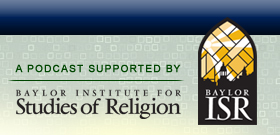

|
Shachar Pinsker on Jewish Coffee House Culture  Date: March 25th, 2018
 Major cultural movements have to begin and evolve somewhere, and what better place than in a coffee house? Prof. Shachar Pinsker, an associate professor of Hebrew Literature and Culture at the University of Michigan, joins us today to talk about the importance these cafés played in shaping Jewish modernity in the era from 1848 to 1939 (and a bit beyond). His new book – A Rich Brew: How Cafés Created Modern Jewish Culture — is about to be released from NYU Press and provides us with a vivid description of these essential urban gathering places at a time of great mobility amongst the European Jewish population. We begin with a walk through Prof. Pinsker’s own intellectual history, discussing how he became enchanted with Jewish literature and how he came to write about coffee houses. His tale is instructive for all scholars. While working on his dissertation and first book, Shachar kept gathering information about European cafés where the literary figures and intellectuals he was studying all seemed to be assembling. Although not thinking a project about cafés would be all that interesting, he was encouraged by others to write about the topic and it eventually led to his fascinating new book. We discuss the history of coffee houses, noting that they originated several centuries ago in the Near East and were imported to Europe from the Ottoman Empire, first to England in the16th century where they were named “taverns without wine” or “penny universities.” These cafés were not only local gathering places for people in a community, but they also represented an important “other” place given the exotic nature of coffee and their transnational connections. We discuss why the period from roughly the mid-19th century until the mid-20th century represented the “Golden Age” of coffee houses and how it corresponded with the era of Jewish modernization. Cafés represented places where one could get a sense of community within the growing anonymous city, and was a place where people debated and shared ideas. Often these cafés became closely identified with different schools of thought, attracting certain artists and intellectuals, and fomenting spirited divisions that often led opposing schools of thought to take up residence in other cafés. Tony notes that many of the photographs in Shachar’s book were of individuals who were dressed up in fancy clothing, and this leads to some observations about how cafés represented places where people presented themselves publicly, but also served to reinforce class, gender, nationality, and ethnic status. The coffee houses of Europe became important places for Jews during the late 19th and early 20th century as the Jewish population was on the move. Prof. Pinsker uses the travels of S.Y. Agnon to illustrate this point as he moved through many of the cities discussed in Shachar’s book including Warsaw, Odessa, Berlin, and Vienna. Networks of migration were set up in these cafés and travelers would know to go to coffee houses to find community. Shachar points out that cafés represent an important “thirdspace” in urban areas, occupying area between the public and private, as well as the objective and subjective. We then walk through the various cities he highlights in his book — Odessa, Warsaw, Vienna, and Berlin — pointing out how the differed from one another, yet how the cafés in each city provided a sense of continuity, acculturation and integration. Jews became identified with café culture in many of these places and Shachar points out the tension in the phrase “Jew belong in the coffee house” often heard in Vienna; cafés were places where Jews did find belonging, but also became a focal point of anti-Semitism. We then discuss how coffee culture moved beyond Europe and into New York and Tel Aviv, along with how and why cafés seemed to lose their intellectual and cultural vibrancy in the last half of the 20th century. Jewish socio-economic mobility (e.g., to the Upper West Side of New York) as well as the growing presence of second and third generation Jews in Tel Aviv who lost a sense of their migratory culture are possible reasons why coffee houses have lost their cultural impact. Prof. Pinsker also speculates about the role that the Internet is having on community, noting that while people in coffee shops nowadays can often be seen interaction with their computers and phones (and not socializing directly), the world wide web may actually be crafting new spaces for community. Only time will tell. Recorded: March 14, 2018.
RELATED LINKS Prof. Shachar Pinsker’s bio at the Jean & Samuel Frankel Center for Judaic Studies at the University of Michigan. Prof. Shachar Pinsker’s personal website. A Rich Brew: How Cafés Created Modern Jewish Culture, by Shachar Pinsker. Literary Passports: The Making of Modernist Hebrew Fiction in Europe, by Shachar Pinsker. RELATED PODCASTS Shari Rabin on Jews on the American Frontier. David Fishman on Saving Jewish Documents During World War II. Carmel Chiswick on the Economics of Being Jewish in America. Other podcasts related to Judaism.
Leave a Reply |
 Search The Podcast
To search the podcast, type a term and click the Search button.
  Browse Podcast Categories
Select a category below to browse the podcast:
   |














